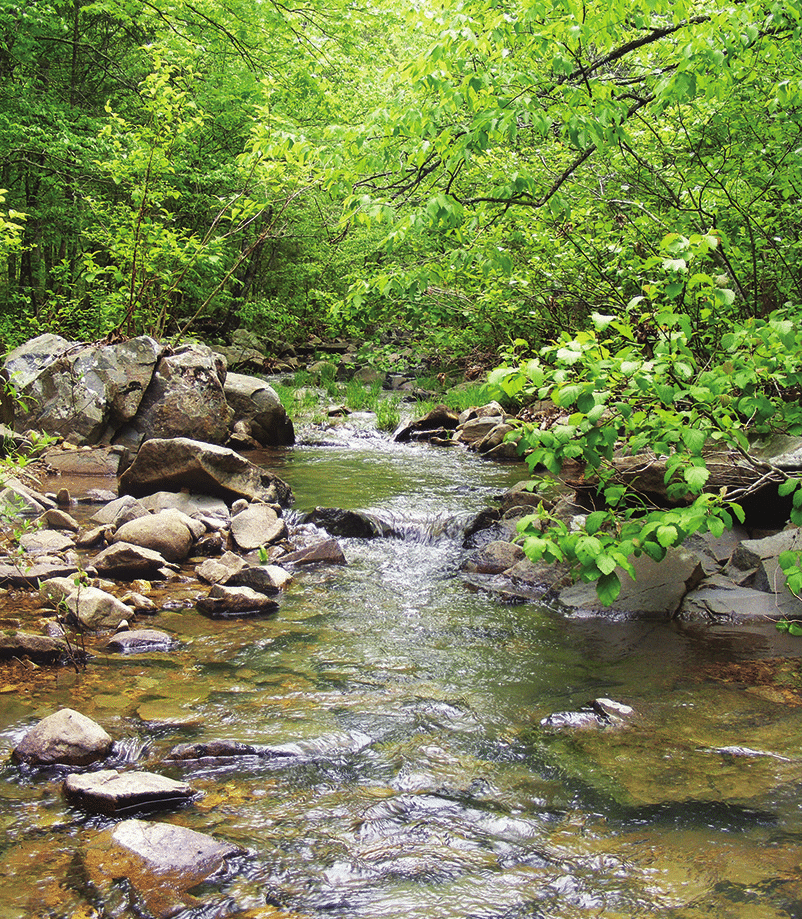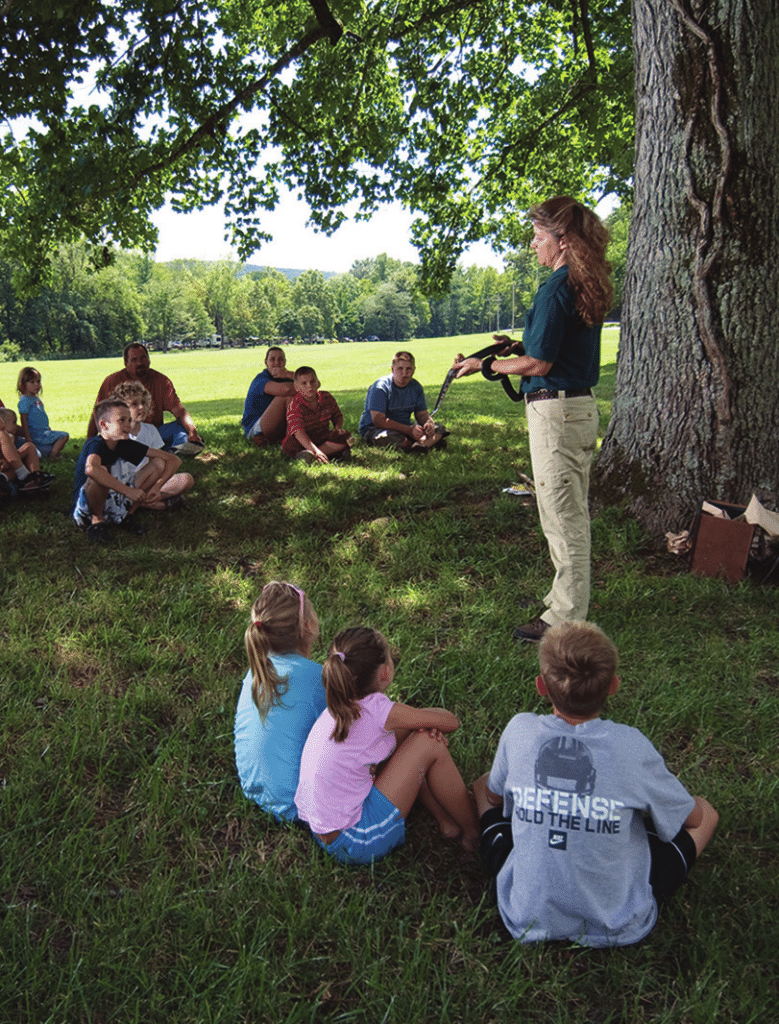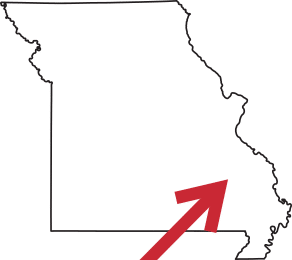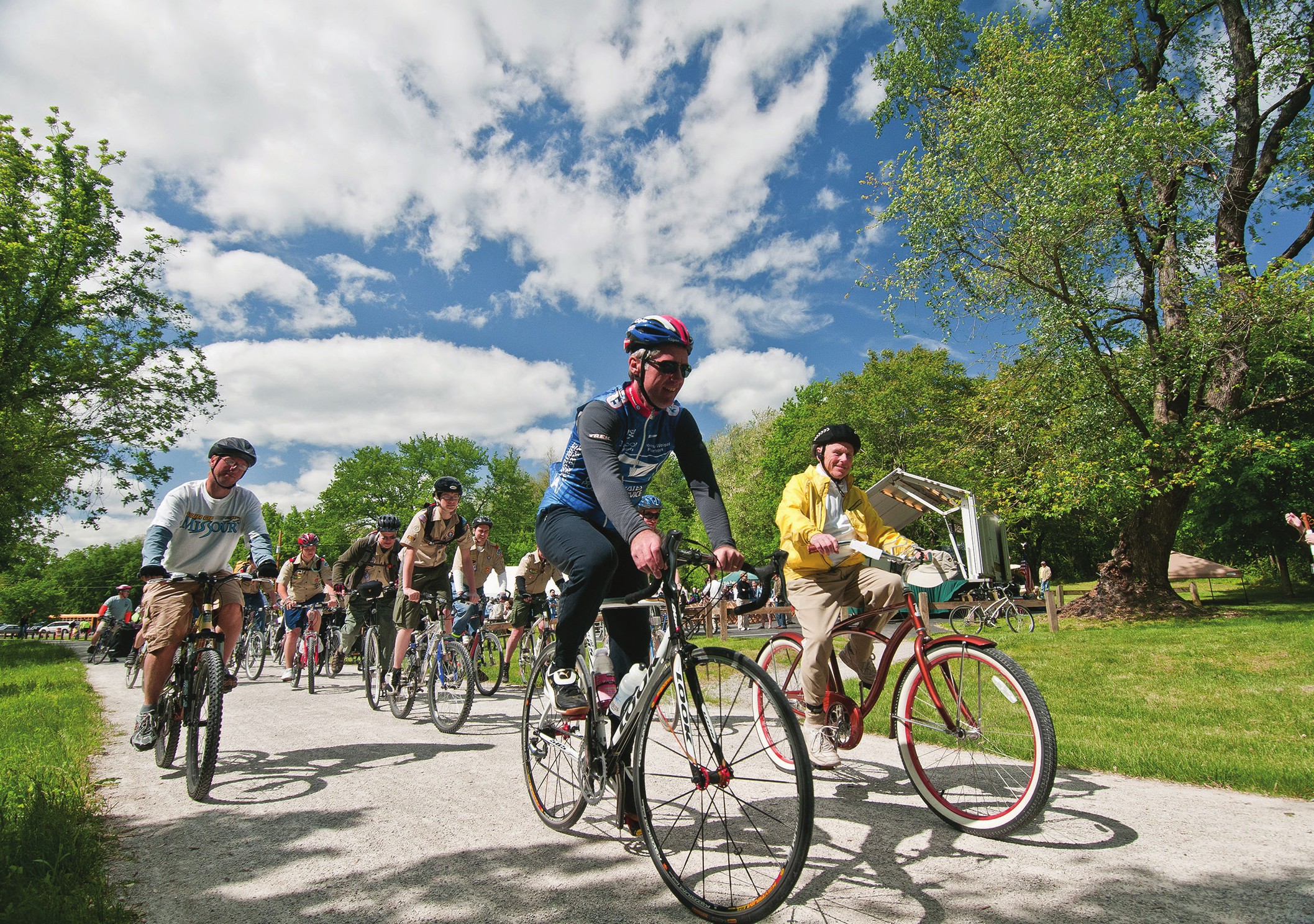Named for the governor of Missouri (1924), this state park has stunning vistas, clear mountain streams, mountains, and so much more. Plan your trip for several days (you can stay in a rustic cabin or camp), so you can take in everything this park has to offer.

ON THE SOUTHERN FLANK of the St. Francois Mountains, Sam A. Baker State Park offers visitors the freedom to wander at will in spacious, wild lands, savor old-time park hospitality in rustic comfort, enjoy the refreshing tingle of a clear Ozark mountain stream, and ascend the blue granitic hulk of Mudlick Mountain, where you can survey virtually the entire panorama of the St. Francois Mountains and scan the deeply dissected hills of the Ozark border that drops off into the Mississippi Lowlands beyond.
This classic Missouri state park stands out in bold relief, encompassing all of Mudlick Mountain and the adjacent streams. On the east side, the park fronts on the St. Francis River and for about five miles on its tributary, Big Creek. Huge boulders of Precambrian Mudlick dellenite, called blue granite by the locals, litter the hillsides and canyons. Rushing creek waters polish them to a beautiful sheen. Because the park was established under the old Missouri Game and Fish Commission, a large portion of the mountainous area was initially set aside as a big-game refuge. Today, deer and wild turkey have returned to their former abundance, both inside the park and in the state, and no longer require artificial measures for their propagation.
Cultural as well as natural resources make this park a Missouri classic. The first major construction came when the park became the site of Civilian Conservation Corps (CCC) Camp 5, set up in 1933 in the valley near the present-day visitor center. By 1935, CCC enrollees had built barracks, installed telephone and water lines, laid out trails, planted trees, fought fires, and built a number of well-crafted rustic structures, including bridges, cabins, barbecue pits, restrooms, trail shelters, a gatekeeper’s stand, and a stable. Works Progress Administration (WPA) workers completed a timber and blue granite dining lodge.
These handsome, sturdy, Depression-era structures continue to function in the park today. Indeed, they set the tone for the park. Owing to the integrity of the preserved CCC and WPA workmanship, the 4,860 acres of the 1930s park have been designated on the National Register of Historic Places.
The park offers Missourians an authentic Ozark experience with six trails for hiking, biking, or horse riding, and hands-on nature exhibits.

Life was hard in rural Wayne County where Sam A. Baker was born, grew up, and later taught school. After a career in education, Baker was elected governor of Missouri in 1924. During his term, many of the first-generation of state parks were acquired—not least of them the forested, mountainous tract of canyons, shut-ins, and rushing streams in Wayne County, close to the village of Patterson where the governor was born.

5,324 acres
Wayne County
Trails
- Fire Tower Trail (2 mi)
- Mudlick Trail (3 trail options from 5.5 to 16.75 mi)
- Paved Bicycle Trail (1.5 mi)
- Shut-Ins Trail (1.25 mi)
Historic Structures
- CCC bridges, cabins, trailshelters, and more.
- WPA dining lodge
Related Posts
Get Out and Enjoy the Katy Trail State Park!
What was once the MKT (Missouri-Kansas-Texas) railroad,The Katy Trail State Park has so much to explore on foot, by bike, or on some stretches, horseback. The trail runs 240 miles over 14 counties. Get out and see the state in a whole new way.
Wild Things Herb Dip
Foraging wild plants is healthy and fun. You get outside and then eat what you find. If foraging is not your thing, you can get these herbs at larger grocery stores or your local farmers’ market. But we say, try a little foraging. The Missouri Department of Conservation is a great resource. MDC.mo.gov/wild-edibles-4



